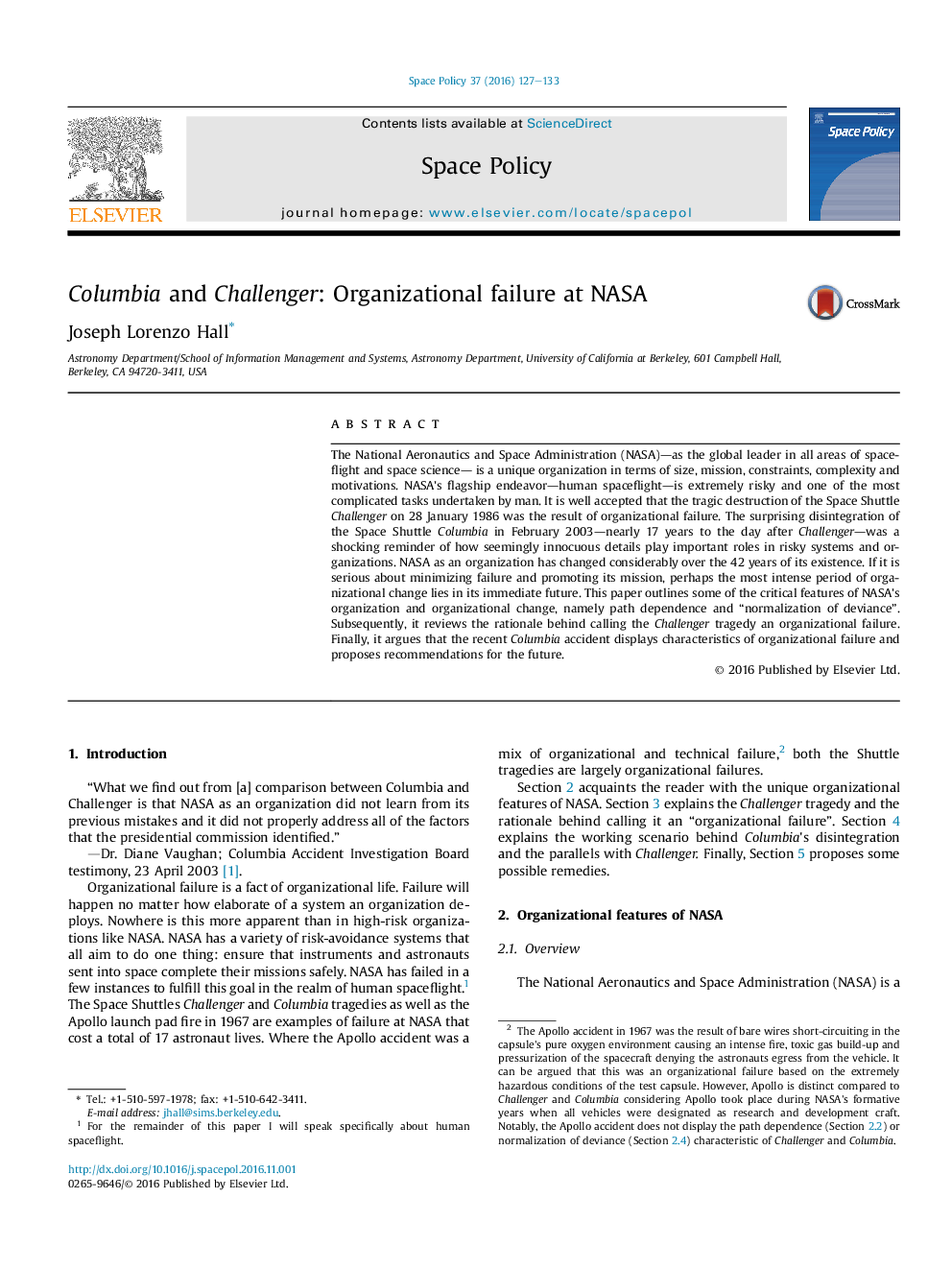| Article ID | Journal | Published Year | Pages | File Type |
|---|---|---|---|---|
| 5126857 | Space Policy | 2016 | 7 Pages |
The National Aeronautics and Space Administration (NASA)-as the global leader in all areas of spaceflight and space science- is a unique organization in terms of size, mission, constraints, complexity and motivations. NASA's flagship endeavor-human spaceflight-is extremely risky and one of the most complicated tasks undertaken by man. It is well accepted that the tragic destruction of the Space Shuttle Challenger on 28 January 1986 was the result of organizational failure. The surprising disintegration of the Space Shuttle Columbia in February 2003-nearly 17 years to the day after Challenger-was a shocking reminder of how seemingly innocuous details play important roles in risky systems and organizations. NASA as an organization has changed considerably over the 42 years of its existence. If it is serious about minimizing failure and promoting its mission, perhaps the most intense period of organizational change lies in its immediate future. This paper outlines some of the critical features of NASA's organization and organizational change, namely path dependence and “normalization of deviance”. Subsequently, it reviews the rationale behind calling the Challenger tragedy an organizational failure. Finally, it argues that the recent Columbia accident displays characteristics of organizational failure and proposes recommendations for the future.
